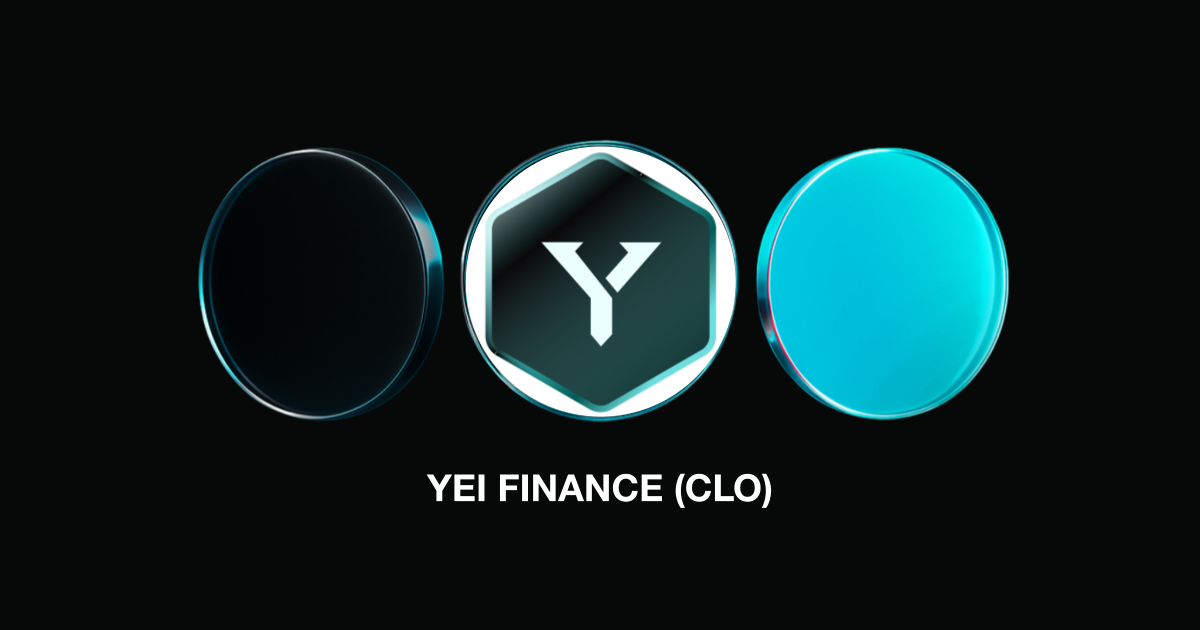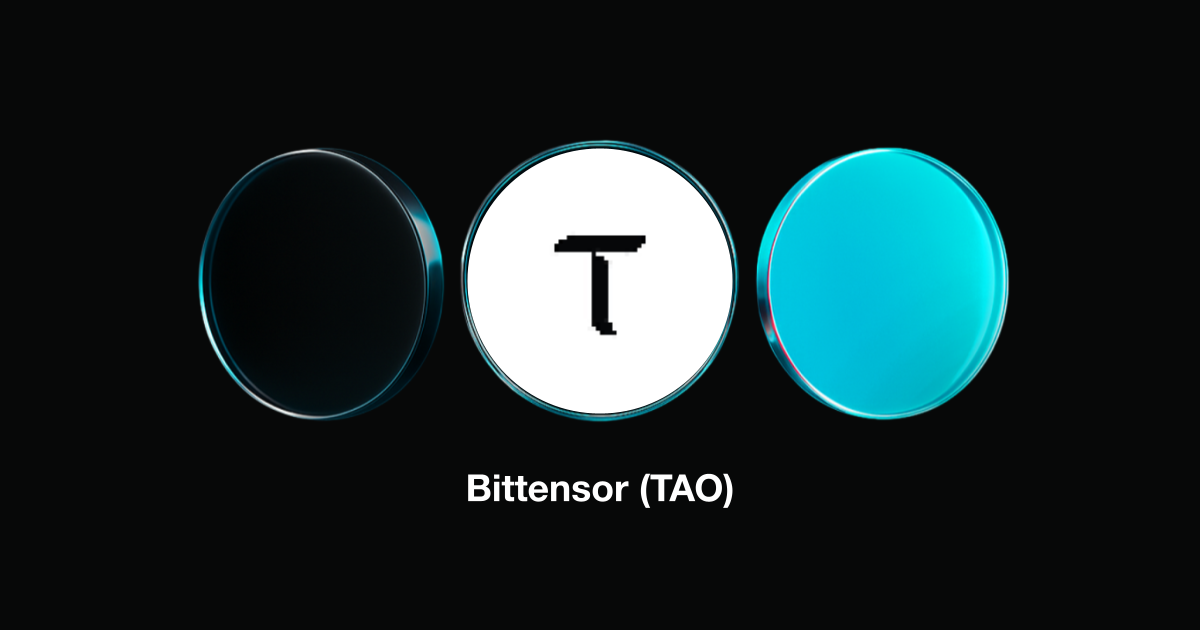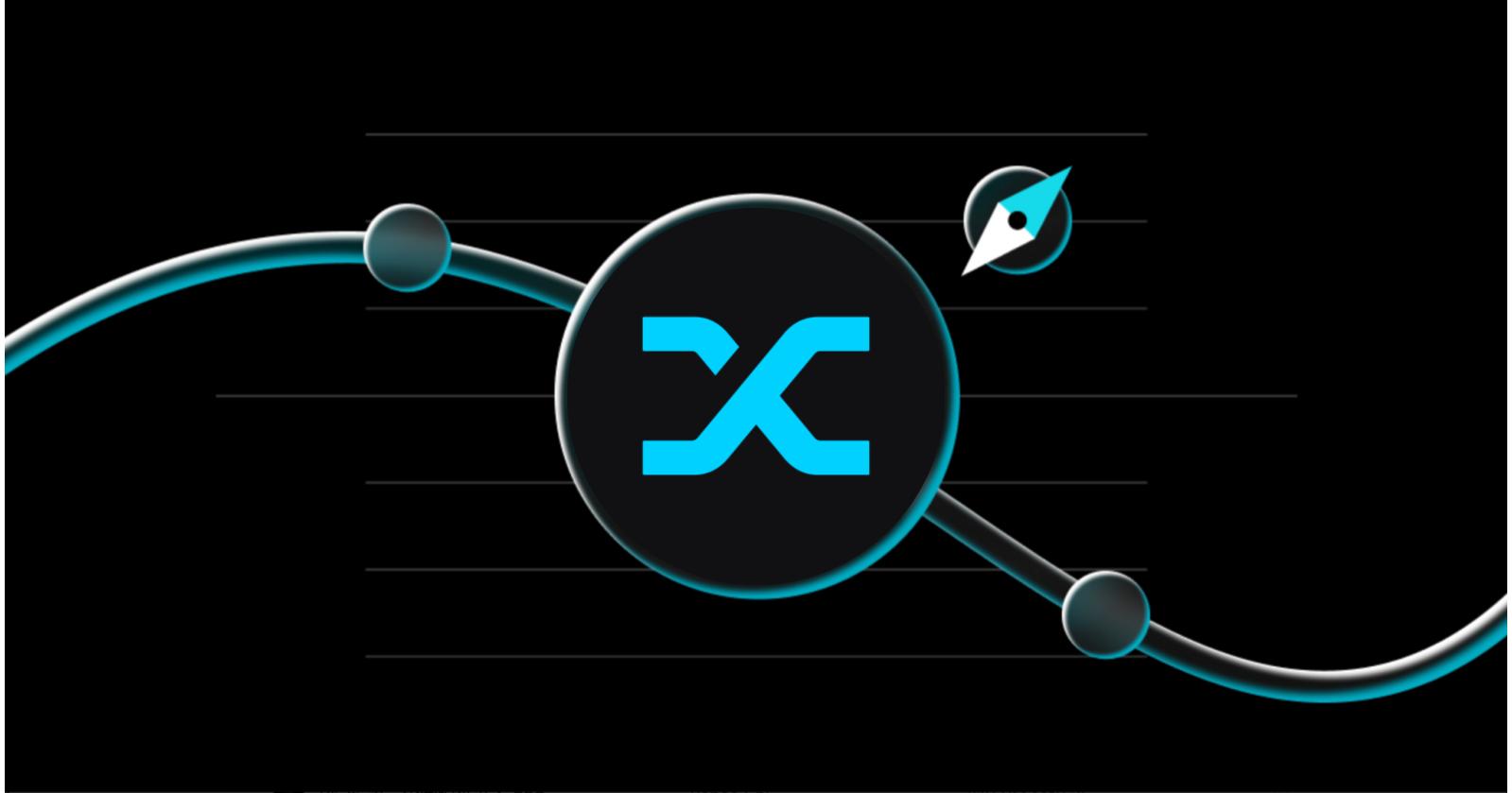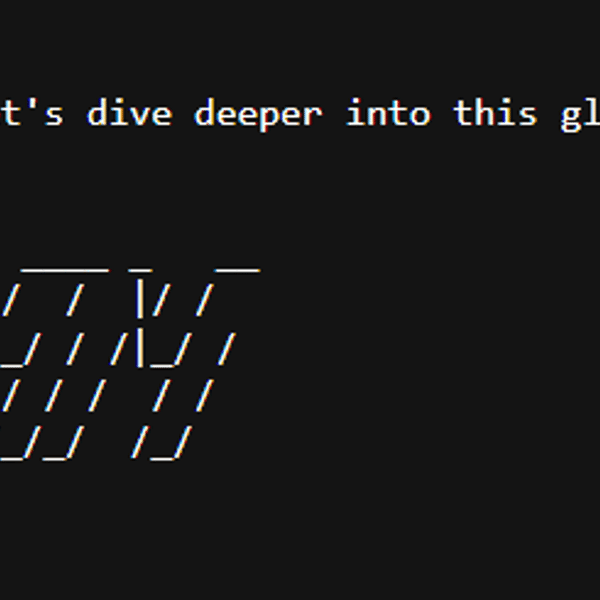Bitget:全球日交易量排名前4!
BTC 市场份额58.87%
当前ETH GAS:0.1-1 gwei
热门BTC ETF:IBIT
比特币彩虹图:考虑定投
比特币减半年份:2024年,2028年
BTC/USDT$111213.89 (-2.88%)恐惧与贪婪指数38(恐惧)
山寨季指数:0(比特币季)
比特币现货 ETF 总净流入流出量 -$326.4M(1日);+$3.36B(7日)。Bitget 新用户立享 6200 USDT 欢迎礼包!立即领取
到 Bitget App 随时随地轻松交易!立即下载
Bitget:全球日交易量排名前4!
BTC 市场份额58.87%
当前ETH GAS:0.1-1 gwei
热门BTC ETF:IBIT
比特币彩虹图:考虑定投
比特币减半年份:2024年,2028年
BTC/USDT$111213.89 (-2.88%)恐惧与贪婪指数38(恐惧)
山寨季指数:0(比特币季)
比特币现货 ETF 总净流入流出量 -$326.4M(1日);+$3.36B(7日)。Bitget 新用户立享 6200 USDT 欢迎礼包!立即领取
到 Bitget App 随时随地轻松交易!立即下载
Bitget:全球日交易量排名前4!
BTC 市场份额58.87%
当前ETH GAS:0.1-1 gwei
热门BTC ETF:IBIT
比特币彩虹图:考虑定投
比特币减半年份:2024年,2028年
BTC/USDT$111213.89 (-2.88%)恐惧与贪婪指数38(恐惧)
山寨季指数:0(比特币季)
比特币现货 ETF 总净流入流出量 -$326.4M(1日);+$3.36B(7日)。Bitget 新用户立享 6200 USDT 欢迎礼包!立即领取
到 Bitget App 随时随地轻松交易!立即下载


Listapie (LTP) 价格预测
未上架
Listapie在2025、2026、2030年乃至未来可能价值多少?Listapie在明天、本周或本月的预测价格是多少?如果持有Listapie到2050年,潜在投资回报率是多少?
本页面提供Listapie的短期和长期价格预测工具,帮助您评估Listapie未来的价格表现。您还可以自行设定预测值,以估算Listapie的未来价值。
需要注意的是,由于加密货币市场本身具有波动性大、复杂度高的特性,尽管价格预测提供了潜在价格区间和走势场景的参考,但仍应保持审慎态度。
本页面提供Listapie的短期和长期价格预测工具,帮助您评估Listapie未来的价格表现。您还可以自行设定预测值,以估算Listapie的未来价值。
需要注意的是,由于加密货币市场本身具有波动性大、复杂度高的特性,尽管价格预测提供了潜在价格区间和走势场景的参考,但仍应保持审慎态度。
2025年及未来Listapie价格预测走势图
根据预测的每日增长率+0.014%,预测Listapie未来10天的价格走势。
今日价格预测(Oct 14, 2025)
$0.3675
明日价格预测(Oct 15, 2025)
$0.3676
5天后价格预测(Oct 19, 2025)
$0.3678
本月价格预测(Oct 2025)
$0.3681
下月价格预测(Nov 2025)
$0.3697
5个月后价格预测(Mar 2026)
$0.3759
2025年价格
$0.3766
2026年价格
$0.3954
2030年价格
$0.4806
根据短期Listapie价格预测,预计Listapie价格将在Oct 14, 2025达到$0.3675,Oct 15, 2025达到$0.3676,以及Oct 19, 2025达到$0.3678。根据每月Listapie价格预测,预计Listapie价格将在Oct 2025达到$0.3681,Nov 2025达到$0.3697,Mar 2026达到$0.3759。根据每年长期Listapie价格预测,预计Listapie价格将在2025年达到$0.3766,2026年达到$0.3954,且2030年达到$0.4806。
今日Listapie价格预测
当前Listapie(LTP)价格为$0.3332,24小时价格涨跌幅为-8.54%。预计Listapie(LTP)今日价格将达到$0.3675。了解更多今日Listapie价格。
Listapie Oct 2025价格预测
预计Oct 2025,Listapie(LTP)价格涨跌幅为26.71%,且预计Listapie(LTP)价格将于Oct 2025底达到$0.3681。
Listapie 2025价格预测
预计2025,Listapie(LTP)价格涨跌幅为50.62%,且预计Listapie(LTP)价格将于2025年底达到$0.3766。
长期Listapie价格预测:2026、2030、2035、2040、2050
以下为基于固定增长率的Listapie价格预测模型。该模型不考虑市场波动、外部经济因素或突发事件,仅专注于Listapie的平均价格趋势,帮助投资者分析并快速估算Listapie投资的潜在收益。
请输入您预测的Listapie年增长率,即可查看Listapie未来价值变化情况。
请输入您预测的Listapie年增长率,即可查看Listapie未来价值变化情况。
每年Listapie价格预测(基于5%的预测年增长率)
%
预测年增长率:请输入一个介于 -100%到+1000%之间的百分比。
| 年份 | 预测价格 | 总收益率 |
|---|---|---|
2026 | $0.3954 | +5.00% |
2027 | $0.4152 | +10.25% |
2028 | $0.4359 | +15.76% |
2029 | $0.4577 | +21.55% |
2030 | $0.4806 | +27.63% |
2035 | $0.6134 | +62.89% |
2040 | $0.7829 | +107.89% |
2050 | $1.28 | +238.64% |
基于年增长率为5%的情况下,预计Listapie(LTP)价格将在2026达到$0.3954,2030年达到$0.4806,2040年达到$0.7829,2050年达到$1.28。
Listapie 2026价格预测
在2026,基于预测年增长率为5%的情况下,Listapie(LTP)价格预计将达到$0.3954。基于该预测,投资并持有Listapie直至2026的累计投资回报率将达到5.00%。
Listapie 2030价格预测
在2030,基于预测年增长率为5%的情况下,Listapie(LTP)价格预计将达到$0.4806。基于该预测,投资并持有Listapie直至2030的累计投资回报率将达到27.63%。
Listapie 2035价格预测
在2035,基于预测年增长率为5%的情况下,Listapie(LTP)价格预计将达到$0.6134。基于该预测,投资并持有Listapie直至2035的累计投资回报率将达到62.89%。
Listapie 2040价格预测
在2040,基于预测年增长率为5%的情况下,Listapie(LTP)价格预计将达到$0.7829。基于该预测,投资并持有Listapie直至2040的累计投资回报率将达到107.89%。
Listapie 2050价格预测
在2050,基于预测年增长率为5%的情况下,Listapie(LTP)价格预计将达到$1.28。基于该预测,投资并持有Listapie直至2050的累计投资回报率将达到238.64%。
您能从Listapie中获得多少收益?
免责声明:本内容不构成投资建议。所提供的信息仅用于一般参考目的。本页面所提供的任何信息、资料、服务或其他内容,均不构成任何形式的招揽、推荐、背书,亦不构成金融、投资或其他方面的建议。在做出任何投资决策前,请务必寻求来自法律、金融及税务等方面的独立专业意见。
短期Listapie价格预测表
每日Listapie价格预测(基于0.014%的每日预估涨幅)
Listapie在明日、5日后、10日后及更长时间的预测价格是多少?%
预测每日涨幅:请输入一个介于-100%到+1000%之间的百分数。
| 日期 | 预测价格 | 总收益率 |
|---|---|---|
Oct 15, 2025 (明日) | $0.3676 | +0.01% |
Oct 16, 2025 | $0.3676 | +0.03% |
Oct 17, 2025 | $0.3677 | +0.04% |
Oct 18, 2025 | $0.3677 | +0.06% |
Oct 19, 2025 (5日后) | $0.3678 | +0.07% |
Oct 20, 2025 | $0.3678 | +0.08% |
Oct 21, 2025 | $0.3679 | +0.10% |
Oct 22, 2025 | $0.3679 | +0.11% |
Oct 23, 2025 | $0.3680 | +0.13% |
Oct 24, 2025 (10日后) | $0.3680 | +0.14% |
基于0.014%的每日涨幅,预计Listapie(LTP)价格将在Oct 15, 2025达到$0.3676,Oct 19, 2025达到$0.3678,Oct 24, 2025达到$0.3680。
Listapie Oct 15, 2025价格预测
根据Listapie的价格预测,其每日涨幅为0.014%,预计在Oct 15, 2025 (明日),1枚Listapie的价格将达到$0.3676。若投资并持有Listapie至Oct 15, 2025为止,预期收益率为0.01%。
Listapie Oct 19, 2025价格预测
根据Listapie的价格预测,其每日涨幅为0.014%,预计在Oct 19, 2025 (5日后),1枚Listapie的价格将达到$0.3678。若投资并持有Listapie至Oct 19, 2025为止,预期收益率为0.07%。
Listapie Oct 24, 2025价格预测
根据Listapie的价格预测,其每日涨幅为0.014%,预计在Oct 24, 2025 (10日后),1枚Listapie的价格将达到$0.3680。若投资并持有Listapie至Oct 24, 2025为止,预期收益率为0.14%。
每月Listapie价格预测(基于0.42%的每月预估涨幅)
Listapie在下个月、5个月后、10个月后及更长期的预测价格是多少?%
预测每月涨幅:请输入一个介于-100%到+1000%之间的百分数。
| 日期 | 预测价格 | 总收益率 |
|---|---|---|
Nov 2025 (次月) | $0.3697 | +0.42% |
Dec 2025 | $0.3712 | +0.84% |
Jan 2026 | $0.3728 | +1.27% |
Feb 2026 | $0.3744 | +1.69% |
Mar 2026 (5个月后) | $0.3759 | +2.12% |
Apr 2026 | $0.3775 | +2.55% |
May 2026 | $0.3791 | +2.98% |
Jun 2026 | $0.3807 | +3.41% |
Jul 2026 | $0.3823 | +3.84% |
Aug 2026 (10个月后) | $0.3839 | +4.28% |
根据每月0.42%的涨幅,预计Listapie(LTP)将在Nov 2025达到$0.3697,Mar 2026达到$0.3759,Aug 2026达到$0.3839。
Listapie Nov 2025价格预测
根据每月0.42%的涨幅,Listapie (LTP)的预测价格在Nov 2025(次月)为$0.3697。若投资并持有Listapie至Nov 2025底,预期收益率为0.42%。
Listapie Mar 2026价格预测
根据每月0.42%的涨幅,Listapie (LTP)的预测价格在Mar 2026(5个月后)为$0.3759。若投资并持有Listapie至Mar 2026底,预期收益率为2.12%。
Listapie Aug 2026价格预测
根据每月0.42%的涨幅,Listapie (LTP)的预测价格在Aug 2026(10个月后)为$0.3839。若投资并持有Listapie至Aug 2026底,预期收益率为4.28%。
热门加密货币价格预测文章

YEI Finance: A Complete Guide to the DeFi Protocol and CLO Price Prediction
If you’ve been exploring the latest trends in decentralized finance, you’ve probably come across yei finance—and for good reason. As we move toward the end of 2025, yei finance has stepped up as one of the most innovative and user-friendly lending platforms around. Combining the speed of Sei blockchain with the flexibility of the Clovis ecosystem, it’s catching the attention of crypto enthusiasts, yield hunters, and developers alike. Let’s dive deeper into what yei finance is, how it works, why it matters, and where its token CLO price might be heading next.
What Is YEI Finance?
Yei Finance is a decentralized, non-custodial protocol designed for money markets in the new era of DeFi. By deploying its markets on the Sei blockchain, Yei Finance capitalizes on high throughput and ultra-fast confirmation times, empowering users to deposit assets, earn attractive yields, and borrow against their holdings with ease. The protocol not only prioritizes transparency and security through rigorous smart contract auditing, but it also embraces a modular architecture thanks to its integration with the Clovis Network. This synergy allows Yei Finance to serve as both a robust standalone platform and a critical building block within a growing ecosystem of decentralized financial products, positioning itself as a futureproof solution in the rapidly evolving DeFi landscape.
How YEI Finance Works
The inner workings of Yei Finance are both advanced and user-centric. At its core, the protocol allows users to supply supported digital assets into dynamic liquidity pools. Once deposited, these assets accrue interest automatically, creating a passive income stream for liquidity providers. This earned yield is a direct function of the platform’s dynamic interest rate model, which adjusts based on the balance of supply and demand across the lending pools. For those seeking liquidity, Yei Finance offers over-collateralized borrowing: users can provide their assets as collateral and take out loans in various cryptocurrencies, optimizing capital efficiency without relinquishing ownership.
What sets Yei Finance apart is its sophisticated risk management. Riskier or particularly volatile assets are placed into isolated pools, ensuring that any adverse price action or liquidation event remains contained and does not cascade across the entire platform. Beyond this, the protocol is architected for multi-chain compatibility, meaning it is poised to enable seamless lending and borrowing across other leading ecosystems as its integration with the Clovis Network deepens. By focusing on both user safety and multi-chain operability, Yei Finance crafts a DeFi experience that is at once powerful and intuitive.
YEI Finance Features and Benefits
One of the most powerful aspects of Yei Finance is its multi-layered risk management system. Through real-time monitoring, automated liquidation mechanisms, and carefully selected price oracles, the platform safeguards both lenders and borrowers against market volatility and technical failures. The risk controls operate in tandem with Yei Finance’s dynamic interest rate system, where returns for liquidity providers and borrowing costs for users remain competitive, adjusting fluidly as the protocol’s utilization metrics fluctuate. This means yields are never stagnant, rewarding active participation and supplying liquidity where it's most needed.
Another significant benefit of Yei Finance is its seamless cross-chain integration potential. By aligning with the Clovis middleware, Yei Finance extends its reach beyond the Sei blockchain, preparing to bridge liquidity to other networks like Cosmos and Ethereum. This modularity is not just a backend feature; it’s a forward-looking guarantee of resilience and adaptability as DeFi continues to fragment and migrate between chains. Yei Finance also centers its community through strong governance mechanisms, allowing YEI token holders to vote on all major decisions, influencing both the future of the protocol and the assets it supports. All of this is wrapped in an interface that emphasizes clarity, speed, and ease, making DeFi accessible without sacrificing sophistication.
How To Get Started with YEI Finance
Engaging with Yei Finance begins with accessing its web platform and connecting a compatible cryptocurrency wallet. The protocol supports popular options such as MetaMask and Sei Wallet, ensuring that the onboarding process is smooth for most DeFi enthusiasts. Once connected, users can effortlessly deposit supported cryptocurrencies into Yei Finance’s liquidity pools and immediately begin earning interest. The borrowing process is equally streamlined: users select the assets they wish to use as collateral, determine their borrowing needs, and manage their loan-to-value ratios via an intuitive on-screen dashboard. For those interested in protocol governance, acquiring and staking the YEI token grants access to voting rights, enabling active participation in shaping upgrades, fee models, and future asset integrations. As cross-chain compatibility becomes a reality, users of Yei Finance will also be able to bridge assets to and from other blockchains, unlocking further earning or arbitrage opportunities—all without leaving the platform’s sleek, secure environment.
YEI Finance Tokenomics
The YEI token is the economic engine of YEI Finance, designed with strong DeFi fundamentals:
Governance: Vote on critical protocol upgrades and roadmap adjustments.
Staking: Lock YEI to receive a share of platform revenue and additional incentives.
Deflationary Mechanics: Part of each transaction fee is used to buy back and burn YEI, supporting long-term value.
Liquidity Mining: Early adopters and liquidity providers are rewarded with YEI emissions, bootstrapping TVL and platform liquidity.
Token Allocation (Approximate, based on docs):
Community/Ecosystem: 35%
Yield Mining: 30%
Team/Advisors: 15%
Treasury: 10%
Public Sale: 10%
YEI Finance aligns its incentives with usage, platform revenue, and governance, setting the stage for sustainable growth.
YEI Finance Roadmap and Clovis Ecosystem Integration
YEI Finance’s development trajectory is ambitious, with several upcoming milestones:
Q2 2024: Mainnet launch on Sei, onboarding of primary assets and stablecoins.
Q3 2024: Expanded asset listings, isolated risk pool deployment, and oracle upgrades.
Q4 2024: Launch of cross-chain lending/borrowing with Cosmos and EVM integrations.
2025: Third-party integrations via Clovis modules, institutional vaults, advanced leverage products, and insurance rails.
By leveraging the Clovis network’s underlying technology, YEI Finance is one of the first protocols to offer modular money markets—making DeFi more composable and secure.
Benefits of Using YEI Finance
Choosing Yei Finance as your primary DeFi platform opens a suite of compelling advantages. The protocol’s interest rates are constantly optimized, ensuring that users receive competitive yields based on real-time liquidity demands. Security is paramount, with contracts fully audited, regularly tested, and supported by robust, automated liquidation processes that shield both lenders and borrowers from erratic market events.
Perhaps most distinctively, Yei Finance is built for a modular, cross-chain world. By tapping into the reach of both the Sei blockchain and Clovis middleware, users are empowered to transfer assets and access new earning opportunities beyond the limitations of a single network. Participation in governance offers users the ability to steer the future of the protocol, ensuring it remains responsive and community-driven. All of these benefits are delivered in an environment designed for accessibility, allowing both advanced users and DeFi newcomers to participate with confidence.
Risks and Considerations
Like all decentralized finance protocols, engagement with Yei Finance is not without risks. Despite rigorous code audits and continuous real-time monitoring, smart contract vulnerabilities, though minimized, cannot be completely ruled out. Rapid and unexpected market movements can cause collateral values to plunge, potentially triggering liquidations and cascading effects within isolated pools. Since Yei Finance relies on complex oracle systems for real-time asset pricing, any manipulation or failure of these feeds could also compromise user safety.
Liquidity, especially in more experimental or exotic isolated pools, may sometimes be limited, which can affect a user’s ability to exit positions or secure attractive loan terms during market turbulence. While Yei Finance incorporates state-of-the-art risk management, provides clear user guidance, and transparently displays all system metrics, prospective users should undertake their own due diligence and consider a diversified approach to crypto investing and DeFi participation.
YEI Finance vs. Other Lending Protocols
Yei Finance distinguishes itself from established protocols like Aave, Compound, or Kava through its unique deployment on the Sei blockchain and its foundational partnership with Clovis. This technical alignment bestows Yei Finance with paramount transaction speed, exceptionally low fees, and immediate composability across multiple blockchains as the modular Clovis network matures. Unlike more monolithic DeFi money markets, Yei Finance is built to support isolated risk pools and modular upgrades—allowing for tailored risk exposure that larger platforms, still reliant on pooled-risk architectures, do not always provide.
Governance is another area where Yei Finance excels. Through the YEI token, users are directly involved in the protocol’s evolution, driving listing decisions, adjusting risk parameters, and shaping fee structures in a manner that is fully transparent and community-first. As cross-chain innovation accelerates throughout 2024 and beyond, Yei Finance’s seamless architecture and expansion-ready design firmly establish it as a protocol tailored for the future.
YEI Finance Token Price Prediction 2025, 2026, 2027
A common question is: What is the potential price path for the YEI Finance token over the next few years? While all predictions are speculative, examining the fundamentals, technical roadmap, ecosystem integration, and comparative DeFi token performance provides a reasonable framework.
Factors Driving YEI Finance Price:
Platform TVL Growth: More deposits and loans drive yield, rewards, and buyback pressure.
Cross-chain Expansion: Integration with new chains attracts more users and assets.
Fixed Supply & Burning: Deflationary mechanics support potential upward price pressure over time.
Ecosystem Partnerships: Clovis, Sei, and third-party DeFi protocols could unlock new demand for YEI Finance.
Wider Exchange Listings: Binance, Bitget, and other major CEX/DEX listings may boost liquidity and price discovery.
Price Prediction Table
Conclusion: The Future of YEI Finance
In summary, Yei Finance stands out as a DeFi protocol built for the demands of the modern crypto world: high speed, strong security, flexible architecture, and seamless cross-chain interaction. Its unique partnership with the Clovis network, robust governance via the YEI token, and relentless focus on risk management make Yei Finance a top contender for both yield seekers and DeFi innovators. As the protocol continues to expand its technical footprint, improve user incentives, and deepen integration with leading blockchains, both users and developers have compelling reasons to watch—and actively participate in—the Yei Finance ecosystem.
Disclaimer: The opinions expressed in this article are for informational purposes only. This article does not constitute an endorsement of any of the products and services discussed or investment, financial, or trading advice. Qualified professionals should be consulted prior to making financial decisions.
Bitget 学院2025-10-14 12:49

What Is the United States Crypto Reserve (USCR)? The Solana-Built Vision of a National Crypto Reserve
Did you know that the United States government now holds billions of dollars’ worth of Bitcoin and other cryptocurrencies seized from criminal cases? This growing crypto stockpile has fueled new discussions about what a national digital reserve might look like — and whether it could live entirely on the blockchain. That’s where the United States Crypto Reserve (USCR) comes in, a Solana-based project that aims to showcase a transparent, on-chain version of what a U.S. crypto reserve could be.
Unlike an official government program, USCR is a community-led experiment built to demonstrate transparency, not authority. Every transaction, holding, and reserve change can be verified in real time on Solana’s fast and low-cost network. For investors, it’s an intriguing mix of national symbolism and blockchain innovation — a project that turns the idea of “trust in the system” into something you can actually see on-chain.
What Is the United States Crypto Reserve (USCR)?
The United States Crypto Reserve (USCR) is a Solana-based cryptocurrency project that aims to represent the concept of a U.S. national digital reserve — a kind of “crypto-era treasury” built entirely on the blockchain. Unlike a central bank or government-issued currency, USCR is a community-driven initiative created to demonstrate how a transparent, decentralized reserve could operate in real time. It’s part of a growing wave of blockchain experiments exploring what financial sovereignty and transparency might look like if managed on-chain instead of behind closed institutional doors.
The project issues a token called USCR, with a fixed supply of 1 billion tokens minted on Solana. Every transaction, holder, and reserve movement can be publicly tracked, offering a level of visibility that traditional reserves rarely achieve. The project leverages Solana’s fast, low-fee, and energy-efficient infrastructure, ensuring that reserve updates and token transfers can happen instantly and transparently. While holding USCR doesn’t mean owning government-backed assets, it symbolizes participation in an open financial experiment — one that puts verification over trust.
Interestingly, the project’s official website uses a .org and .com domain under the name “uscrgov” — an intentional nod to the tone of a government entity. However, the team clearly clarifies that the “GOV” in the domain stands for “Go-Value,” not “Government,” to avoid any misunderstanding about official status. In other words, USCR is not a government project, nor does it claim to be. It’s a grassroots effort to model what a transparent, citizen-accessible crypto reserve might look like — a symbolic experiment that blends patriotic branding with blockchain transparency.
How the United States Crypto Reserve (USCR) Works
Tthe United States Crypto Reserve (USCR) functions as a transparent, blockchain-based reserve system built on the Solana network. The project combines the idea of a national reserve with on-chain verifiability — allowing anyone to inspect its holdings and transactions in real time. Instead of relying on central banks or closed reports, USCR uses smart contracts and public wallets to make its operations fully visible to the community.
● Reserve Structure: USCR claims to hold a diversified basket of major cryptocurrencies — including Bitcoin (BTC), Ethereum (ETH), Ripple (XRP), Cardano (ADA), and others — as its reserve foundation. These assets are intended to represent digital equivalents of traditional financial reserves.
● On-Chain Transparency: All reserve holdings and transactions are recorded directly on the Solana blockchain, meaning users can verify balances and movements using public explorers like Solscan or the project’s own dashboard. This transparency allows investors to audit reserve data anytime without relying on third parties.
● Solana Infrastructure: Built on Solana’s high-speed, low-cost network, USCR benefits from instant transactions and scalable data storage. This makes it possible to track reserve updates almost in real time while keeping transaction fees minimal.
● Token Representation: The USCR token symbolizes participation in this digital reserve model. While it doesn’t represent direct ownership of the underlying assets, it gives holders visibility and, in the future, potential voting rights in how the reserve evolves.
● Community Governance (Future Vision): The project’s roadmap suggests that token holders could eventually take part in on-chain governance, voting on proposals such as which assets to include in the reserve or how to allocate future acquisitions.
The Vision and Mission of USCR
The United States Crypto Reserve (USCR) was founded on a bold idea — that national-style financial reserves could be made fully transparent and community-governed through blockchain technology. Instead of relying on closed reports or central authorities, USCR envisions a world where citizens can verify a reserve’s holdings in real time, directly on the blockchain. Built on Solana’s high-speed network, the project demonstrates how technology can replace institutional opacity with open data, making financial trust something that’s provable, not promised.
USCR’s broader mission centers on transparency, financial sovereignty, and innovation. Its founders see blockchain not just as a financial tool but as a civic one — a way to give people insight and participation in systems that traditionally exclude them. By framing itself as a “people’s reserve,” USCR ties the ideals of independence and openness to digital finance. While it’s not an official government initiative, it reflects a distinctly American spirit: combining innovation with accountability, and using technology to strengthen trust rather than demand it.
How Is USCR Connected to the U.S. Strategic Bitcoin Reserve?
In early 2025, the U.S. government announced plans to establish a Strategic Bitcoin Reserve , designed to hold leading cryptocurrencies as part of a long-term national asset strategy. The goal was to recognize digital currencies as strategic reserves that could strengthen the country’s position in the digital economy. This policy move sparked wide discussion about how a U.S. digital reserve might actually work — and whether such a system could ever be managed transparently on-chain for the public to see.
The United States Crypto Reserve (USCR) emerged around the same time, clearly inspired by that national conversation but separate from and unaffiliated with the government’s program. It is a community-led initiative, not an official U.S. project or token. While both share a similar vision of representing America’s presence in digital finance, USCR operates independently on the Solana blockchain, offering an open, decentralized version of what a national reserve could look like if it were run transparently by the public. In essence, USCR takes the idea behind the Strategic Bitcoin Reserve and turns it into a real-time, on-chain experiment — one where financial transparency replaces institutional control.
USCR Token Overview: Supply, Circulation, and Market Performance
The United States Crypto Reserve (USCR) operates on the Solana blockchain, with a fixed total supply of one billion tokens, all of which are already in circulation. There’s no plan for additional issuance, making USCR a capped-supply asset. Rather than representing ownership of any government or institutional reserves, the token reflects participation in a community-driven, transparent reserve model. Its value is shaped by market sentiment, the credibility of its on-chain holdings, and the project’s ability to maintain transparency — not by direct redemption of the reserve assets it tracks.
USCR trades primarily on Solana-based decentralized exchanges (DEXs). Liquidity and trading activity remain relatively modest, as the project is still in its early stages. At the time of writing, USCR’s market capitalization ranges between $30–40 million, with the token trading at just a few cents. While this reflects early speculative interest, it also shows growing curiosity about blockchain-based reserve models that combine transparency, technology, and community governance.
USCR Potential Use Cases and Impact
The United States Crypto Reserve (USCR) was created not just as a token, but as a live experiment in transparency and decentralized finance. It explores how blockchain technology could make reserve management open to everyone — from investors to policymakers — while also promoting civic participation in financial systems.
Key Potential Uses:
● Transparency Model: Demonstrates how reserve assets can be tracked and verified in real time.
● Community Governance: Enables participants to vote or engage in future decision-making about reserve composition.
● Education and Research: Serves as a live case study for policymakers, researchers, and blockchain developers.
● Symbolic Investment: Appeals to investors who support the idea of an open, U.S.-centric digital reserve.
Limitations and Long-Term Viability of USCR
While the United States Crypto Reserve (USCR) presents an innovative approach to transparency and digital reserves, it faces clear limitations. The project is not affiliated with the U.S. government, despite its national branding, and its website clarifies that the “GOV” in its domain stands for “Go-Value,” not Government. Its value relies entirely on market perception and the team’s ability to maintain trust through consistent on-chain transparency.
Liquidity and regulatory challenges also weigh on USCR’s future. Trading is limited to Solana-based decentralized exchanges, where volatility can be high and market depth is shallow. Meanwhile, its patriotic branding and experimental concept could draw regulatory scrutiny if misinterpreted as an official initiative. Ultimately, USCR’s long-term viability depends on its capacity to sustain community engagement, expand credibility, and evolve responsibly in a fast-changing crypto environment.
USCR Price Prediction and Future Outlook
The United States Crypto Reserve (USCR) Price
Source: DEX Screener
The United States Crypto Reserve (USCR) currently trades at around $0.03–$0.04 per token, with a market capitalization between $30–40 million. As a young Solana-based project, its value remains speculative and highly influenced by community sentiment, liquidity, and broader crypto market trends. Investors should view USCR as an experimental asset — one that reflects both potential innovation and significant volatility.
Price Outlook:
● Short-Term (3–6 months): If Solana’s ecosystem continues its growth and USCR gains visibility, the token could rise modestly toward the $0.05–$0.06 range. However, market corrections or low liquidity could push it back near $0.02.
● Mid-Term (1 year): Broader adoption or exchange listings could lift prices to around $0.07–$0.10, provided the project maintains transparency and strengthens its community base. Lack of progress, however, could result in sideways movement or gradual decline.
● Long-Term (2–3 years): If USCR successfully evolves into a recognized model for on-chain reserves, it might trade between $0.10–$0.15, reflecting stronger credibility and utility. But given regulatory uncertainty and competition, the token could also face prolonged stagnation if momentum fades.
Conclusion
The United States Crypto Reserve (USCR) stands out as an ambitious experiment in merging national symbolism with blockchain transparency. Built on the Solana network, it aims to show how a digital reserve could function openly and verifiably — without relying on central institutions or hidden ledgers. While not affiliated with the U.S. government, the project captures growing interest in how nations and communities might manage financial trust in the digital age.
For investors, USCR represents both innovation and uncertainty. Its transparent design and community-driven mission are appealing, but its long-term value depends on continued execution, liquidity, and credibility. Whether it matures into a recognized model for on-chain reserves or remains a symbolic experiment, USCR has already contributed meaningfully to one of crypto’s most important conversations — how technology can make trust visible.
Bitget 学院2025-10-14 12:22

What is Bittensor Crypto (TAO)? A Complete Guide to the Decentralized OpenAI
While much of the market is still licking its wounds from the latest downturn, TAO crypto has staged a stunning comeback, drawing renewed interest from both institutional and retail investors. The buzz is driven by a game-changing move from Grayscale, fresh innovations with subnet tokens, and a surge in price that’s outpacing the competition.
In this guide, we’ll break down what’s driving TAO crypto’s latest rally, explain what makes Bittensor (TAO) unique, uncover how TAO’s subnet tokens work, analyze the latest price action, and look at what could be next for this red-hot crypto.
Source: CoinMarketCap
What is TAO Crypto (Bittensor)?
TAO crypto is the native token of Bittensor, a decentralized, open-source protocol that’s revolutionizing artificial intelligence and machine learning by building a permissionless AI network. Unlike other projects, Bittensor incentivizes anyone—from developers to data scientists—to contribute AI models and computational resources, earning TAO crypto in return.
Key features of TAO crypto and Bittensor:
Decentralized AI Marketplace: Anyone can join or use AI services without central gatekeepers.
Open Participation: TAO crypto powers everything from staking to governance, forming the backbone of its unique incentive system.
Transparent Rewards: Contributors are paid in TAO crypto according to their model’s value and network impact.
This innovative ecosystem is what’s making TAO crypto such a compelling pick in the ever-growing world of AI and DePIN (Decentralized Physical Infrastructure Network) tokens.
How Does TAO Crypto Work?
At its core, TAO crypto uses a system called “Proof of Intelligence.” Here’s how it works:
Subnets: Bittensor’s network is divided into subnets, each focused on a different aspect of AI, like language or vision.
Validators & Miners: Validators review miners’ AI model outputs. The best performing miners get the most rewards in TAO crypto.
Transparent, On-Chain Accountability: All transactions, rewards, and model scores are recorded on-chain, ensuring fairness and transparency.
This setup encourages continuous improvement of AI services fueled by the desire to earn more TAO crypto—aligning the network’s growth with the interests of every participant.
TAO Tokenomics: Supply, Emissions, and Reward Structure
A major factor differentiating TAO crypto is its transparent, evolving tokenomics. In 2025, TAO crypto features:
Max Supply: Capped at 21 million TAO, similar to Bitcoin—a design that encourages scarcity-driven value over time.
Minting Mechanism: About 7,200 TAO crypto are newly minted every day, divided as incentives for miners (model providers) and validators (model judges), and further allocated across subnets according to on-chain performance ranking.
Halving Event: This emission rate will be cut in half in December 2025, mirroring the Bitcoin halving model. This pivotal event increases supply scarcity, prompting heightened competition among miners and potentially driving up TAO crypto’s price.
Subnet Incentive Distribution: The largest share of new TAO crypto goes to the best-performing subnets, as measured by validator scoring, with rewards auto-adjusted based on subnet productivity and liquidity ratios.
Staking Economy: Users can stake TAO for subnet tokens, fueling new investment opportunities and adding utility across the growing Bittensor ecosystem.
These mechanics ensure ongoing demand for TAO crypto, align digital labor with network growth, and create economic incentives for continuous AI improvement. For investors and users, understanding TAO crypto tokenomics is key to grasping both the scarcity and growth potential at play.
Why TAO Subnet Tokens Could Be a Hidden Gem in Q4 2025
A rapidly growing trend in the TAO crypto ecosystem is the rise of subnet tokens. These assets are quickly attracting attention, but according to industry insights, subnet tokens remain “the most overlooked asset class” in crypto—even as they drive some of the biggest opportunities in the space.
How TAO Subnet Tokens Work
Subnet tokens stand apart from typical crypto assets in several ways:
Priced in TAO Crypto: The core innovation is their denomination—they’re not pegged to dollars or stablecoins, but to TAO crypto itself. Their value is set by liquidity ratios in automated market maker (AMM) pools tied to TAO.
Supply Dynamics: The more valuable a subnet token becomes against TAO crypto, the higher its issuance, attracting more miners and computational power to that subnet.
Performance-Driven: The best performing subnets—determined by transparent validator scoring—attract more mining and higher demand.
Every day, about 7,200 TAO crypto are distributed, but this will halve soon with the upcoming Bittensor halving event in December 2025. Heightened competition means miners crowd top subnets, and subnet token prices can soar on quality service and demand.
Why Subnet Tokens Matter for TAO Crypto Price
Speculation & Utility: Many subnets, like Chutes, Ridges, and Gradient (often backed by top venture capitalists), are developing specialized AI products, creating diverse use cases and new value streams.
DEX Innovations: Platforms like Taofi’s DEX now allow swapping and bridging of subnet tokens directly, making it easier for users and investors to speculate and participate.
Valuation Tracking: To spot future winners, track subnet token price growth versus TAO crypto, monitor Alpha Distribution Ratio (ADR), and watch staking pool participation. Those with sustainable high issuance and business growth have the best upside.
As more use cases and revenue are generated around subnets, the entire subnet sector’s market cap can be a direct engine for TAO crypto price growth.
TAO Crypto Price: 30% Surge After the Crypto Crash
Following a sharp market correction last month, TAO crypto demonstrated rare strength by quickly rebounding over 30%. While many altcoins were stuck in the red, TAO crypto saw explosive action driven by:
Institutional Endorsement: Grayscale’s SEC filing for a TAO Trust has brought institutional credibility and fresh inflows.
Volume Spike: Trading volume jumped 197% in a single day as investors flocked to gain exposure to TAO crypto.
Rising DePIN Influence: Bittensor now commands more than 33% of the sector’s mindshare.
Social Buzz: TAO crypto trended across Twitter and Reddit, with the community fueling demand and discovery.
Market analysts attribute this robust performance to TAO crypto’s compelling fundamentals and the expanding demand for decentralized AI infrastructure.
TAO Crypto Price Prediction: What’s Next for Price?
The technical outlook for TAO crypto remains bullish this October:
Falling Wedge Breakout Looms: Since October 2024, TAO crypto has consolidated within a falling wedge pattern, often a precursor to a major bullish breakout.
Potential Upside: If confirmed, technical models target a move as high as $1,353—that’s a 236% gain from recent levels, eclipsing April 2024’s ATH of $1,248.
Key Levels: Watch for a break above $402.30 and strong closes above $499.60 for trend confirmation.
Healthy Momentum: RSI is 63, leaving plenty of space for further price appreciation.
Support Zones: Failing a breakout, watch $219.60 and $130.30 as possible support.
TAO crypto’s price is currently benefitting from strong buy-side volume, institutional news, and ongoing sector leadership, but as always, traders should stay alert for volatility in both directions.
Conclusion: Is TAO Crypto Set for More Gains in 2025?
TAO crypto has become one of 2025’s most exciting stories, blending the hottest trends in decentralized AI, strong technicals, pioneering subnet tokenomics, and a green light from institutional giants like Grayscale. With huge potential in the subnet presale arena and a supportive market structure, TAO crypto may continue outperforming—though volatility and sector shifts mean active monitoring is key.
Disclaimer: The opinions expressed in this article are for informational purposes only. This article does not constitute an endorsement of any of the products and services discussed or investment, financial, or trading advice. Qualified professionals should be consulted prior to making financial decisions.
Bitget 学院2025-10-14 10:58

What Is Vanguard (VWA)? The Next Big Thing in Real-World Asset Tokenization
The global market for Real-World Asset (RWA) tokenization is projected to surpass $16 trillion by 2030, and a new project called Vanguard (VWA) wants a piece of that future. Built on the high-speed Solana blockchain, Vanguard (VWA) positions itself as a project that turns tangible assets like gold, silver, and luxury goods into digital tokens that can be traded instantly, anywhere in the world. By merging physical value with blockchain efficiency, VWA is tapping into one of the most promising narratives in the crypto industry: transforming how we own, trade, and invest in real assets.
But as with every fast-rising token, the story isn’t all glitter and gold. Since its launch, Vanguard (VWA) has attracted both excitement and skepticism — celebrated for its bold vision, yet questioned for its transparency and credibility. Is it truly a gateway to the trillion-dollar RWA economy, or just another short-lived hype coin wrapped in futuristic promises? Let’s unpack what Vanguard (VWA) really is, how it works, and whether it deserves a spot on your watchlist.
What Is Vanguard (VWA)?
Vanguard (VWA) is a new Solana-based cryptocurrency project that claims to bridge the gap between traditional finance and blockchain by tokenizing Real-World Assets (RWAs). In essence, it aims to take tangible assets — such as gold, silver, gemstones, or luxury items — and convert them into digital tokens that can be traded or held just like any other crypto asset. The concept isn’t entirely new, but VWA’s approach focuses on accessibility: instead of needing millions to own a bar of gold or a rare collectible, investors could theoretically buy small, fractionalized portions of those assets through VWA tokens.
The project first gained traction in late 2025, following a sharp surge in trading volume and online discussions across Solana’s DeFi community. Its pitch is simple yet ambitious: to “bring physical value to the digital world.” That slogan reflects a broader trend in crypto — the growing movement of RWA tokenization, where tangible assets are represented on-chain to improve liquidity, transparency, and global reach. In the case of Vanguard (VWA), each token is supposedly backed by real, verifiable assets held in custody, giving investors a way to participate in real-world markets without leaving the crypto ecosystem.
However, not everything about VWA is crystal clear. The team behind the project remains anonymous, and official documentation — like a detailed whitepaper or verified audit — has yet to be published. This lack of transparency has led to mixed reactions in the crypto community: some see it as an early-stage gem, while others warn it could be a speculative play dressed in RWA marketing. What’s certain is that Vanguard (VWA) has successfully positioned itself within one of the hottest narratives in crypto — and whether it becomes a real breakthrough or just another passing trend will depend on how it delivers in the months ahead.
How Vanguard (VWA) Works
Vanguard (VWA) is built around a simple but powerful idea: turning real-world assets into digital tokens that can move freely across the blockchain. Operating on the Solana network, VWA leverages Solana’s high transaction speed and low fees to make trading and transferring tokenized assets accessible to anyone. The project’s vision is to take traditionally illiquid assets and represent them as on-chain tokens, allowing investors to buy and sell fractional ownership instantly, without intermediaries. In theory, this creates a seamless bridge between the physical and digital economies, where a token isn’t just a symbol of value but a verifiable claim to something tangible.
In practice, Vanguard (VWA) claims that each token will be backed by real, custodially held assets, giving it intrinsic value. The goal is to unlock liquidity in markets that are normally difficult to trade, such as precious metals or collectibles, by enabling fractionalized ownership. This approach doesn’t just make asset investment more efficient — it also makes it more inclusive, allowing everyday investors to participate in markets that were once limited to high-net-worth individuals or institutions. By combining blockchain transparency with tangible value, Vanguard (VWA) aims to redefine how people perceive and interact with wealth in the digital era.
Vanguard (VWA) Tokenomics
VWA is the main token of the Vanguard project, operating on the Solana blockchain. It has a fixed total supply of 1 billion tokens, with most already in circulation since launch. Early trading placed VWA around $0.007–$0.008, giving it a market capitalization near $7–8 million and daily trading volumes surpassing $1 million on Solana-based decentralized exchanges. This fast and low-fee network makes it easy for retail investors to buy, sell, and transfer VWA without the barriers typical of traditional asset markets.
Unlike many new DeFi tokens, VWA follows a simple economic model — there are currently no staking pools, burning schedules, or complex reward systems. Its value is driven mainly by market demand and the broader excitement around Real-World Asset (RWA) tokenization. By keeping its tokenomics straightforward and supply capped, Vanguard (VWA) emphasizes accessibility and liquidity — two key ingredients that could support long-term growth if the project delivers on its asset-backed vision.
Vanguard (VWA) Price Prediction for 2025, 2026–2030
Predicting the future of any new token is always speculative, but examining VWA’s growth potential through the lens of market trends and RWA adoption gives us some possible scenarios.
● 2025 Price Prediction: As VWA continues to gain attention in the Solana ecosystem, modest growth is expected. If trading volumes remain stable and the project strengthens its credibility, VWA could range between $0.010 and $0.015 by the end of 2025. In a bullish case, new exchange listings or product launches could push it toward $0.020.
● 2026 Price Prediction: Should Vanguard (VWA) demonstrate actual progress in tokenizing assets and attract more partnerships, the token may reach $0.02–$0.04. This would reflect growing investor confidence and a more mature community base around the project.
● 2027 Price Prediction: By this stage, market sentiment will depend heavily on execution. If VWA can show real adoption — such as verified asset backing or integration with RWA platforms — it could rise toward $0.05–$0.07. Otherwise, limited progress could keep it consolidating near previous levels.
● 2028 Price Prediction: As tokenized assets become a mainstream topic, RWA-focused projects could benefit across the board. Under favorable market conditions, VWA might trade between $0.06 and $0.10, supported by broader Solana ecosystem expansion and increasing RWA awareness.
● 2029 Price Prediction: In a strong crypto cycle, Vanguard (VWA) could target $0.10–$0.15, assuming steady growth, healthy liquidity, and user adoption. If the team delivers real use cases and institutional partnerships, higher valuations would be possible.
● 2030 Price Prediction: Looking long-term, if Vanguard (VWA) successfully positions itself as a trusted RWA tokenization platform, it could reach $0.20 or more. However, like any small-cap project, its sustainability will depend on transparency, utility, and execution rather than early hype.
Is VWA Backed by Ripple?
One of the biggest questions surrounding Vanguard (VWA) is whether it’s truly backed by Ripple, the company behind the XRP Ledger. The claim surfaced on social media after the official @vanguard_rwa account on X (formerly Twitter) described the project as “Backed by @Ripple.” That statement quickly spread across crypto communities, fueling speculation that Ripple might be investing in or supporting the project. Given Ripple’s established reputation in cross-border payments and asset tokenization, such an association naturally attracted investor attention and contributed to early hype around VWA.
However, there is no verified evidence that Ripple has any formal partnership or financial relationship with the Vanguard (VWA) project. Ripple has not issued any official statements confirming involvement, nor has the project appeared in any of Ripple’s ecosystem reports or announcements. It’s possible the mention of “backed by Ripple” was used as a marketing tactic to generate attention rather than an actual endorsement. While VWA’s vision of tokenizing real-world assets aligns loosely with Ripple’s broader mission to digitize value, the two projects are independent. Until Ripple itself confirms a connection, investors should assume there is no official backing and treat such claims with caution.
Conclusion
Vanguard (VWA) enters the crypto landscape with an ambitious goal — bringing real-world assets like gold, silver, and collectibles onto the blockchain. Its idea of merging tangible value with digital accessibility is appealing, especially as tokenized assets become one of the most talked-about trends in finance. With Solana’s fast, low-cost infrastructure and a simple, open token model, VWA presents itself as a project that could make asset ownership more flexible and global.
Still, it’s too early to say where this experiment will lead. The project’s concept fits perfectly within the growing Real-World Asset narrative, but much depends on execution, transparency, and real-world adoption. For now, Vanguard (VWA) remains a token worth watching with interest — not because it’s guaranteed to succeed, but because it reflects the direction blockchain innovation is heading. Whether it becomes a lasting player in asset tokenization or just a short-lived spark, VWA offers a glimpse into how crypto continues to blur the lines between the physical and digital worlds.
Disclaimer: The opinions expressed in this article are for informational purposes only. This article does not constitute an endorsement of any of the products and services discussed or investment, financial, or trading advice. Qualified professionals should be consulted prior to making financial decisions.
Bitget 学院2025-10-14 08:13

Tesla Faces Global Scrutiny: Will Investigations Impact Tesla Share Price After Q3 Report?
Tesla is once again in the spotlight as regulatory investigations, litigation, and pivotal updates to its Full Self-Driving (FSD) system shake investor confidence ahead of the highly anticipated Q3 2025 earnings report. With Tesla facing scrutiny from authorities in the US and abroad, and the “Tesla share price” reacting sharply to the latest headlines, investors and market watchers are questioning the company’s mid-term outlook. This article dives into Tesla’s latest news, evaluates the company’s recent operational performance, and provides an insightful forecast for the Tesla share price following the Q3 financial results on October 22.
Source: YahooFinance
Tesla’s Latest News: Investigations, Lawsuits, and FSD Upgrades Cause Market Volatility
Tesla is currently under intense global scrutiny, with regulatory bodies and legal authorities examining both its technological advances and its safety standards. On October 9, 2025, the U.S. National Highway Traffic Safety Administration (NHTSA) launched a major inquiry into approximately 2.88 million Tesla vehicles equipped with the Full Self-Driving (FSD) system. This Tesla-specific investigation follows over 50 reported events, including serious traffic violations and accidents linked to Tesla’s FSD software. These reports highlight potential risks such as running red lights and improper lane changes.
Among 58 examined cases, 14 resulted in accidents and 23 injuries, with six incidents involving Tesla cars running red lights and colliding with other vehicles. Some Tesla owners further alleged that the FSD system failed to properly detect traffic signals or stop on red, with concerns that Tesla has not sufficiently addressed these safety issues. Tesla’s official response is still pending as of this report.
This regulatory probe is still in its preliminary phase, but if the NHTSA determines the affected Tesla vehicles present a substantial safety risk, a widespread recall is likely. The news has already impacted the Tesla share price: by the market close on October 10, 2025, Tesla share price dropped to $413.49 USD, a 5.06% loss, with a market capitalization decrease of about $7.32 billion. Over the last five trading days, the Tesla share price has fallen by 3.80%.
Tesla’s regulatory and legal challenges are not limited to North America. Globally, Tesla is under legal pressure, including an ongoing NHTSA investigation into the Tesla Autopilot system, initiated in August 2021 in relation to at least 322 accidents. In August 2025, a Florida jury held Tesla liable for $240 million in damages over a fatal 2019 Autopilot-related crash, though Tesla attributes the incident to driver error and plans an appeal.
In China, the legal spotlight on Tesla intensifies: in June 2025, Tesla owners filed suit over hardware alleged to be incompatible with full advertised self-driving features, and in August, seven Tesla customers sued the automaker for fraud, seeking stringent compensation for claimed misrepresentations on Tesla’s part.
Tesla Recent Performance: Deliveries Rise, But Growth Faces Challenges
Despite these global headwinds, Tesla continues to highlight its safety and performance metrics. According to Tesla’s internal reports, vehicles using Autopilot or FSD recorded one accident every 6.69 million miles—significantly better than the industry average of one every 702,000 miles based on NHTSA and FHWA data. Tesla vehicles without driver assistance reported one collision per 963,000 miles.
In Q3 2025, Tesla delivered 462,890 vehicles globally—marking a 7% year-over-year increase. This uptick was partly due to a surge in U.S. purchases before federal EV tax credits expired in September. However, Tesla’s growth in Europe has faced strong competition from established automakers such as BMW, Volkswagen, and BYD, and has been further affected by market reactions to Tesla CEO Elon Musk’s high-profile public statements.
Financially, Tesla’s upcoming Q3 2025 earnings report (due October 22) is anticipated with caution. Analyst consensus projects Tesla earnings per share (EPS) at $0.37, representing a 40.3% year-over-year drop. For all of fiscal 2025, Tesla’s EPS is forecast at $1.20, down 41.2% from 2024; analysts expect a rebound to $2.01 in 2026. Still, Tesla’s share price has risen a remarkable 78.6% over the past 52 weeks, far outperforming the broader S&P 500 and sector benchmarks.
Tesla Share Price Prediction After Q3 2025 Earnings Report
Anticipation is high for the Q3 2025 financial results, as Tesla share price is expected to see significant movement. Historically, the Tesla share price posted positive one-day moves after earnings releases 63% of the time over the past five years (falling to 55% over the last three). On average, Tesla share price increases by 4.2% with positive post-earnings surprises, while losses following negative earnings hover around -6.1%.
Current Wall Street sentiment on the Tesla share price is largely “Hold,” as investors weigh the company’s strategic advantages against ongoing legal and regulatory uncertainties. Some analysts, such as Benchmark, remain bullish on the future of Tesla and the Tesla share price, maintaining a Buy rating with a $475 price target and expecting Q3 deliveries to tally around 442,000 units (slightly below consensus, but a strong recovery from Q2).
Ultimately, the trajectory for Tesla share price will be determined by Q3 financial outcomes, management’s future guidance, regulatory developments, and competition in key markets. Investors are strongly advised to review Tesla’s Q3 update and subsequent commentary to assess how Tesla will address safety investigations, regulatory compliance, litigation risks, and its roadmap for next-generation vehicle technology.
Conclusion
Tesla is navigating a complex environment of rapidly evolving technology, legal scrutiny, and intense market competition. While Q3 2025 and the subsequent weeks will be critical for both Tesla and the Tesla share price, investors should remain aware of both potential risks and opportunities in the coming months. Tesla’s ability to address regulatory concerns, sustain innovation, and maintain strong delivery numbers will be key factors influencing the Tesla share price.
Disclaimer: The opinions expressed in this article are for informational purposes only. This article does not constitute an endorsement of any of the products and services discussed or investment, financial, or trading advice. Qualified professionals should be consulted prior to making financial decisions.
Bitget 学院2025-10-13 14:09

Synthetix (SNX) Price Today: Triple-Digit Gains and Ethereum Mainnet DEX Launch
As of mid-October 2025, Synthetix (SNX) ranks among the best-performing DeFi tokens, climbing more than 100% in just one day. The surge followed a market-wide rebound after a flash crash that briefly erased billions in crypto value. While many tokens recovered modestly, SNX’s sharp move upward stood out, drawing renewed interest from traders and long-term holders alike.
The rally arrives at a pivotal time for Synthetix. The project is preparing to launch its Ethereum Mainnet Perpetual DEX, a new decentralized exchange built for perpetual futures trading. The rollout, which includes a $1 million trading competition, has become a major talking point in the DeFi community. Combined with a broader market recovery, these developments have put SNX back on the radar as one of the leading names in on-chain derivatives.
What Is Synthetix (SNX)?
Synthetix is a decentralized finance (DeFi) protocol built on Ethereum that allows users to create and trade synthetic assets, known as Synths. These are tokens that replicate the value of real-world assets such as fiat currencies, commodities, and cryptocurrencies. For instance, traders can buy sUSD, which tracks the U.S. dollar, or sETH, which follows the price of Ethereum. This system gives users a way to gain exposure to different markets without owning the underlying asset.
The project was founded in 2018 by Kain Warwick, an Australian entrepreneur, and was originally launched under the name Havven before being rebranded to Synthetix later that year. The SNX token serves as the backbone of the ecosystem. Holders can stake SNX to mint synthetic assets and earn a share of trading fees. The token also functions as a governance asset, allowing the community to vote on protocol changes and development priorities.
Over time, Synthetix has grown into one of the leading DeFi protocols for derivatives trading. It has influenced many of the newer on-chain financial platforms that followed, thanks to its focus on liquidity, collateralization, and decentralized price exposure.
Synthetix Regains Market Attention with Strong Mid-October Rally
Synthetix (SNX) Price Today
Source: CoinMarketCap
Synthetix (SNX) has regained the spotlight after a dramatic price recovery in mid-October 2025. The token surged by more than 100% within 24 hours, rebounding from a market-wide sell-off that had briefly pushed digital assets lower. At the time of writing, SNX is trading around $1.85, with a market capitalization of over $600 million, placing it among the top DeFi projects by total value. The rapid rebound has drawn renewed attention from both traders and long-term investors who see potential in Synthetix’s evolving ecosystem.
Much of this momentum comes as the project prepares to launch its Ethereum Mainnet Perpetual DEX in the fourth quarter of 2025. The new exchange will allow users to trade perpetual futures directly on Ethereum, eliminating the need for cross-chain bridges or custodial intermediaries. To mark the rollout, Synthetix has announced a $1 million trading competition starting later this month, giving early participants the chance to test the platform’s capabilities under real trading conditions.
In addition, HTX (formerly Huobi) recently listed SNX amid a surge of interest in decentralized derivatives tokens. Following the listing, SNX posted another 55% weekly gain, fueled by rising trading volume and growing confidence in DeFi’s recovery. Together, these developments have brought Synthetix back into market focus, reinforcing its position as one of the most established and adaptive protocols in decentralized finance.
The Next Phase: Launching the Ethereum Mainnet Perpetual DEX
The launch of the Ethereum Mainnet Perpetual DEX marks the beginning of a new phase for Synthetix. After years of development and successful deployment on Layer-2 networks such as Optimism, the project is now returning to Ethereum’s main layer to take advantage of greater liquidity and network stability. The DEX will allow users to trade perpetual futures directly on Ethereum, offering exposure to major assets such as Bitcoin, Ethereum, and Solana through fully on-chain markets. This approach removes the need for custodial intermediaries, maintaining the transparency and decentralization that define Synthetix’s model.
The launch is scheduled to begin on October 20, 2025, starting with a $1 million trading competition designed to test the platform’s performance under live market conditions. Traders will be able to use multiple forms of collateral, including sUSD, wstETH, and cbBTC, while benefiting from optimized gas usage for faster and more cost-efficient transactions. The mainnet rollout is expected to continue through the fourth quarter as the team collects feedback and fine-tunes operations. If successful, this launch could reinforce Synthetix’s role as a cornerstone of decentralized derivatives trading and demonstrate that Ethereum’s main layer is once again ready to handle large-scale, real-time financial activity.
What’s Next for Synthetix (SNX) After the Rally
The outlook for Synthetix (SNX) appears cautiously optimistic as the project moves into a new stage of growth. The successful launch of the Ethereum Mainnet Perpetual DEX could strengthen its position in decentralized derivatives and attract traders who prefer transparent, on-chain trading over centralized exchanges. The shift back to Ethereum’s base layer also reflects a wider trend in DeFi—projects are now focusing less on experimentation and more on stable, scalable products that deliver consistent user value. For Synthetix, this transition signals confidence in its model and in Ethereum’s improved network capacity.
The main challenge ahead will be maintaining engagement and liquidity once the initial excitement from the launch subsides. Competing platforms such as dYdX, GMX, and Vertex already dominate much of the derivatives market, so Synthetix will need to offer distinct advantages in speed, pricing, and collateral flexibility. Enhancements in staking rewards, governance participation, and on-chain efficiency could also help build long-term stability.
Despite these challenges, Synthetix remains one of the better-known names in decentralized finance. It has survived several market cycles, adapted to major shifts in the industry, and maintained an active community. If the team delivers a smooth mainnet rollout and continues refining its trading infrastructure, SNX could see steady growth over the coming year. Much will depend on how effectively Synthetix converts its recent momentum into sustained adoption across DeFi markets.
Synthetix (SNX) Price Prediction for 2025, 2026–2030
Forecasting the price of Synthetix (SNX) involves considering several factors, including market conditions, product adoption, and the overall direction of decentralized finance. While precise figures are speculative, general estimates can be outlined based on current fundamentals and growth expectations.
● 2025 Price Prediction: The launch of the Ethereum Mainnet Perpetual DEX and its $1 million trading competition could help SNX maintain market attention through the end of the year. If user adoption remains steady and liquidity improves, the token could trade between $2.50 and $3.00, representing gradual but healthy growth from current levels near $1.85.
● 2026 Price Prediction: With the platform fully operational and early data from its mainnet trading activity, Synthetix may focus on refining its staking model and collateral efficiency. Assuming consistent protocol use and broader DeFi recovery, SNX could reach the $3.50 to $5.00 range.
● 2027 Price Prediction: By this point, competition from other perpetual trading protocols may intensify, pressuring fees and trading volumes. If Synthetix maintains relevance through governance improvements and product updates, prices could remain in a moderate $5.00 to $7.00 band, depending on market strength.
● 2028 Price Prediction: A maturing DeFi market may bring greater institutional participation in on-chain derivatives. If Synthetix manages to capture part of that demand, SNX could trend between $7.00 and $10.00, supported by sustainable revenue growth and wider market confidence.
● 2029 Price Prediction: Continued technological refinement and potential integration with other Ethereum-based protocols could keep Synthetix in a stable growth phase. A realistic estimate would place the token between $10.00 and $15.00, assuming favorable macroeconomic conditions and no major disruptions.
● 2030 Price Prediction: Under optimistic scenarios where Synthetix becomes a leading global derivatives platform in DeFi, SNX might test higher valuations between $20.00 and $30.00. However, reaching extreme targets such as $100 would require exceptional expansion in trading volume, liquidity, and long-term user retention—an outcome considered unlikely within this decade.
Can Synthetix (SNX) Reach $100?
The question of whether Synthetix (SNX) can reach $100 continues to spark debate among investors. While such a milestone is not impossible, it would require an exceptional expansion of both the project and the wider DeFi market. With a circulating supply of about 343 million SNX, a $100 price would give Synthetix a market capitalization of roughly $34 billion—a level comparable to some of the largest crypto assets during peak bull cycles.
SNX reached its all-time high of $28.77 on February 14, 2021, at the height of the DeFi boom. To rise from that record to $100, the project would need to more than triple its previous peak while achieving sustained growth in trading activity, liquidity, and protocol revenue. Such progress would depend on Synthetix establishing a clear leadership position in decentralized derivatives, expanding beyond Ethereum into broader markets, and competing effectively with major players like GMX and dYdX.
Most forecasts see this as an ambitious goal for the current decade. Even under favorable conditions, long-term estimates between $25 and $30 by 2030 already imply meaningful success. Still, Synthetix has demonstrated resilience through multiple market cycles and continues to innovate with its Ethereum Mainnet Perpetual DEX. While $100 remains distant, the protocol’s continued development and growing presence in DeFi make SNX a project that investors continue to watch closely.
Conclusion
Synthetix (SNX) has returned to the spotlight after its sharp October rebound and the upcoming launch of the Ethereum Mainnet Perpetual DEX. The new exchange and its $1 million trading competition show that the project is still pushing forward with practical innovation rather than hype. By moving back to Ethereum’s main layer, Synthetix is betting on deeper liquidity and stronger network security to support the next phase of on-chain derivatives trading. For investors, this combination of steady progress and renewed visibility has made SNX one of the more interesting DeFi tokens to follow in the final quarter of 2025.
The next challenge will be turning short-term excitement into lasting growth. Competing platforms are advancing quickly, but Synthetix’s experience, community, and technical foundation give it an advantage that newer projects often lack. Whether or not SNX ever reaches ambitious price targets like $100, its continued evolution shows a project that remains active, relevant, and focused on building long-term value in decentralized finance.
Register now and explore the wonderful crypto world at Bitget!
Disclaimer: The opinions expressed in this article are for informational purposes only. This article does not constitute an endorsement of any of the products and services discussed or investment, financial, or trading advice. Qualified professionals should be consulted prior to making financial decisions.
Bitget 学院2025-10-13 09:35
在 Bitget 购买 LTP 仅需三步

免费创建 Bitget 账户
用电子邮件地址/手机号码在 Bitget 注册,并创建一个强密码以确保账户安全。

认证您的账户
输入个人信息并上传有效的身份照片进行身份认证。

购买 LTP(LTP)
用多种支付方式在 Bitget 上购买 LTP。我们将为您展示具体步骤。
购买更多加密货币
如何购买
Bitcoin (BTC)

如何购买
Ethereum (ETH)

如何购买
Ripple (XRP)

如何购买
Tron (TRX)

如何购买
Dogecoin (DOGE)

如何购买
Tezo (XTZ)

如何购买
Bitget Token (BGB)

如何购买
Polygon (POL)

如何购买
Solana (SOL)

如何购买
Terra Classic (LUNC)

如何购买
Fantom (FTM)

如何购买
Bitcoin Cash (BCH)

如何购买
Ethereum Classic (ETC)

如何购买
Litecoin (LTC)

如何购买
Binance (BNB)

如何购买
Avalanche (AVAX)

如何购买
Internet Computer (ICP)

如何购买
Tether (USDT)

如何购买
USDC (USDC)

如何购买
Uniswap (UNI)

查看更多
热门币种价格预测
 Ethereum价格预测
Ethereum价格预测 OFFICIAL TRUMP价格预测
OFFICIAL TRUMP价格预测 XRP价格预测
XRP价格预测 Stellar价格预测
Stellar价格预测 Solana价格预测
Solana价格预测 WINkLink价格预测
WINkLink价格预测 Litecoin价格预测
Litecoin价格预测 Bitcoin价格预测
Bitcoin价格预测 Fartcoin价格预测
Fartcoin价格预测 Pi价格预测
Pi价格预测 Toncoin价格预测
Toncoin价格预测 Bonk价格预测
Bonk价格预测 Cardano价格预测
Cardano价格预测 Pepe价格预测
Pepe价格预测 Dogecoin价格预测
Dogecoin价格预测 Shiba Inu价格预测
Shiba Inu价格预测 Terra价格预测
Terra价格预测 Smooth Love Potion价格预测
Smooth Love Potion价格预测 Kaspa价格预测
Kaspa价格预测 dogwifhat价格预测
dogwifhat价格预测您可以在哪里购买Listapie(LTP)?
鉴于加密货币市场本身的高波动性和复杂性,准确预测其未来价格几乎是不可能的。然而,基于市场的周期性特征、历史价格走势、长期发展前景以及更广泛应用的潜力,我们仍然可以对未来的价格变动做出一些大致预测。同时需要注意的是,尽管这些预测可以为潜在的价格区间和走势场景提供一定参考,但仍应以谨慎和怀疑的态度看待。实际价格走势很可能与这些预测存在较大偏差,因此这些预测仅可作为对市场投资潜力的粗略估算。
本内容仅为参考,不构成邀约或邀请,也不构成 Bitget 对购买、出售或持有本内容中提及的任何金融产品或工具的建议,也不构成投资建议、财务建议、交易建议或任何其他类型的建议。所提出的数据可能反映了在 Bitget 交易所以及其他加密货币交易所和市场数据平台上交易的资产价格。Bitget 可能会对加密货币交易收取相关费用,这些费用可能不会反映在所显示的兑换价格中。Bitget 对内容中的任何错误或延误,或对依赖任何内容而采取的任何行动不承担责任。
本内容仅为参考,不构成邀约或邀请,也不构成 Bitget 对购买、出售或持有本内容中提及的任何金融产品或工具的建议,也不构成投资建议、财务建议、交易建议或任何其他类型的建议。所提出的数据可能反映了在 Bitget 交易所以及其他加密货币交易所和市场数据平台上交易的资产价格。Bitget 可能会对加密货币交易收取相关费用,这些费用可能不会反映在所显示的兑换价格中。Bitget 对内容中的任何错误或延误,或对依赖任何内容而采取的任何行动不承担责任。

